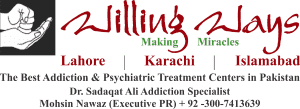
It also gets difficult for such adults to hold onto a job. Problems with self-esteem and relationships also tend to arise. Moreover, tendencies towards chemical or non-chemical addictions are also exhibited in adults with the symptoms of ADHD. There are a number of contributing factors for the development of ADHD. Studies have suggested that ADHD can be a genetic disorder; however, no specific gene has been identified for ADHD. Apart from genetic reasons, brain damage is also considered one of the leading causes of the development of ADHD.
Moreover, environmental factors have also been considered as one of the triggering factors in the development of ADHD, such as high exposure to toxic chemicals like lead or alcohol/drug use during pregnancy. ADHD is found to be more common in boys than girls. It is often identified by the parents or teachers during the early years of school among the children due to their inability to pay attention to studies or classroom activities. Several comorbid disorders can also develop along with ADHD, including anxiety disorders, conduct disorders, learning disabilities, mood disorders, and substance use disorders.



